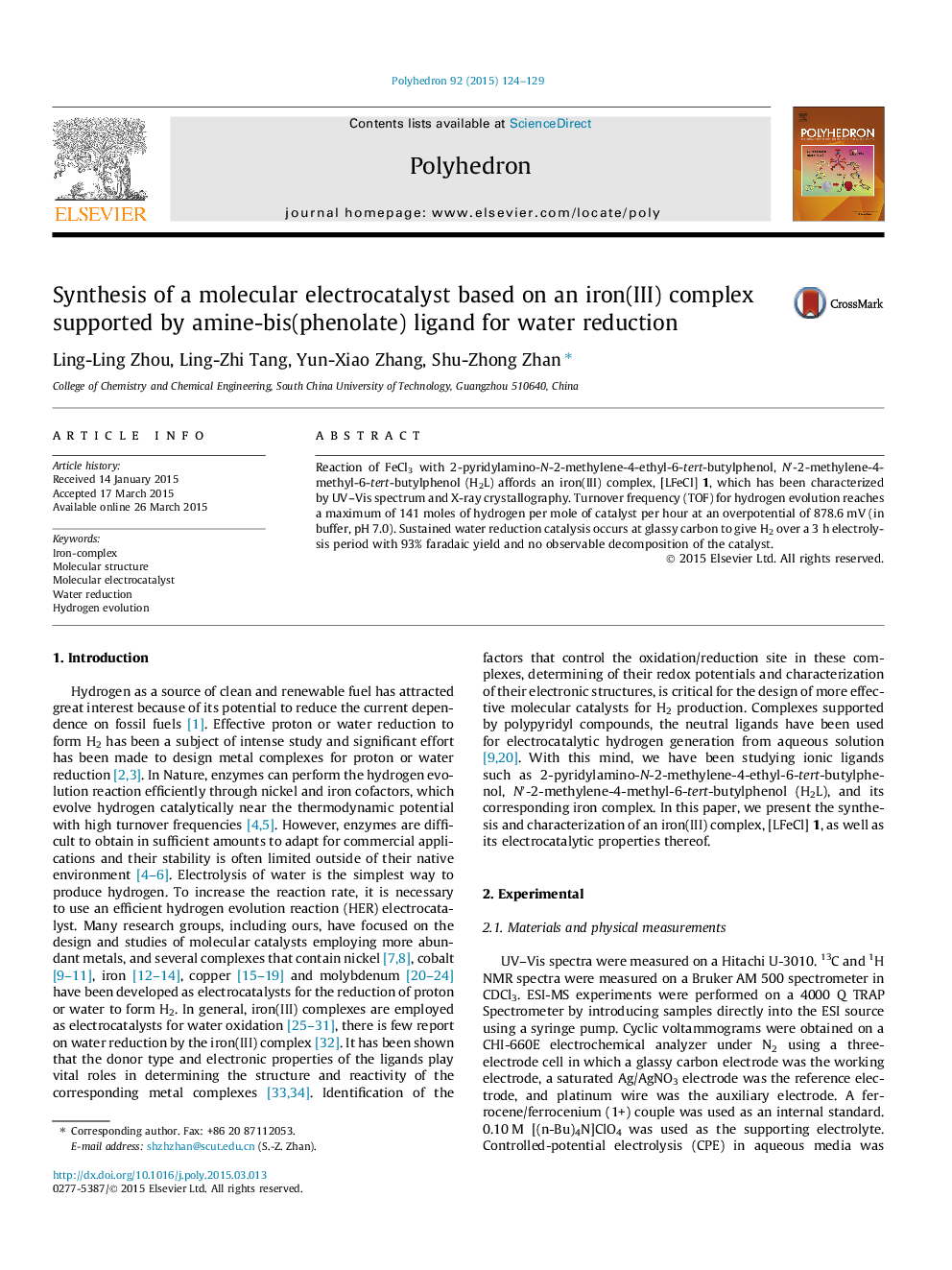| Article ID | Journal | Published Year | Pages | File Type |
|---|---|---|---|---|
| 1336062 | Polyhedron | 2015 | 6 Pages |
Reaction of FeCl3 with 2-pyridylamino-N-2-methylene-4-ethyl-6-tert-butylphenol, N′-2-methylene-4-methyl-6-tert-butylphenol (H2L) affords an iron(III) complex, [LFeCl] 1, which has been characterized by UV–Vis spectrum and X-ray crystallography. Turnover frequency (TOF) for hydrogen evolution reaches a maximum of 141 moles of hydrogen per mole of catalyst per hour at an overpotential of 878.6 mV (in buffer, pH 7.0). Sustained water reduction catalysis occurs at glassy carbon to give H2 over a 3 h electrolysis period with 93% faradaic yield and no observable decomposition of the catalyst.
Graphical abstractThe reaction of anhydrous FeCl3 with amine-bis(phenolate) ligand (H2L) produces a new iron(III) complexes, [LFeCl] 1, which has been determined by X-ray crystallography. 1 can catalyze hydrogen evolution from both acetic acid and water.Figure optionsDownload full-size imageDownload as PowerPoint slide
